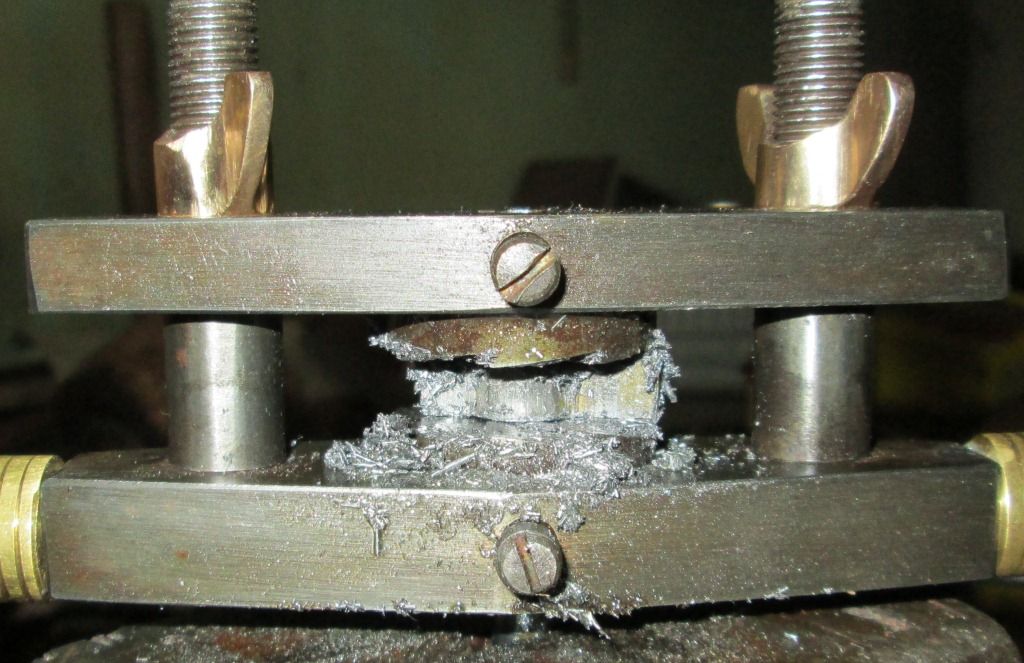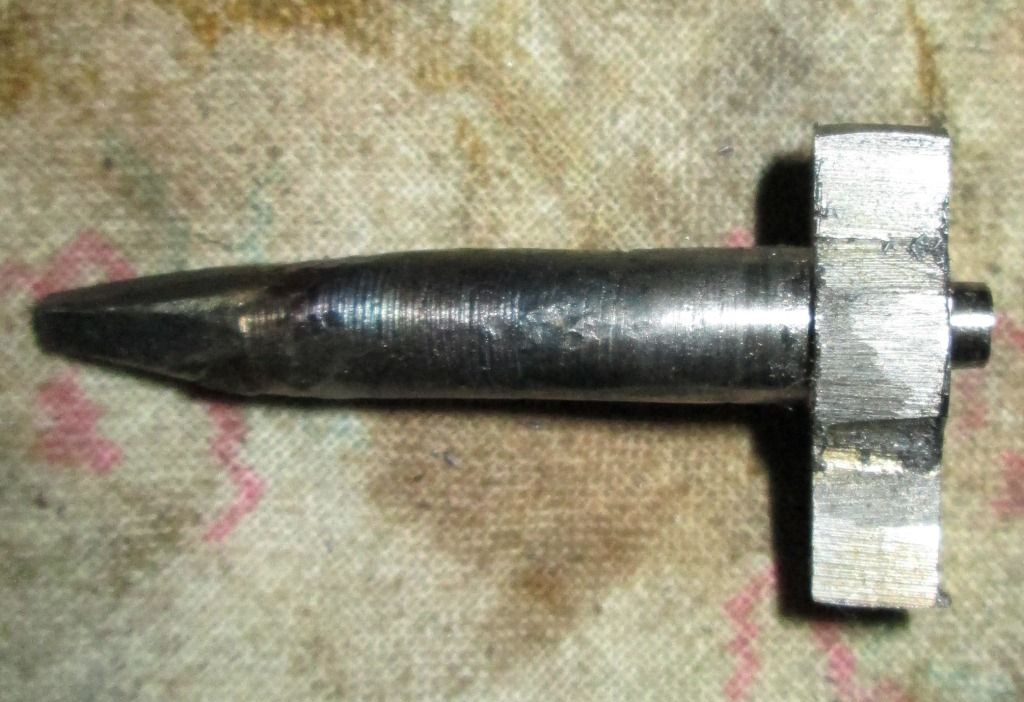Guys,
Now for the end of the process. My first guess as to the size of the cutter stops gave a tumbler that was 0.298", a bit too thick for a rifle size gunlock. I cut back the stops a bit and got the tumbler thickness to 0.262", just about right. The larger axle is 0.327" and the small axle is 0.179", again just about right. The photos show the tumbler as the cutters bottomed out tightly against the stops, and the tumbler after the mill work is completed.




These photos show the new made tumbler from the "pretty" tumbler mill beside the older tumbler made from the "file" tumbler mill. As you can see, the older one has a nicer surface finish. The difference is not as great as the photos show, the flash of the camera accentuated the difference. The surface finish of the new one is certainly adequate for the use, but as expected the finer tool cutter made from a file yielded a finer surface finish, but it sure took a longer time to cut the tumbler surfaces.


After all, this has been an interesting experience, thanks to you all for the great input and for finding for me the round tuit.
Jim

